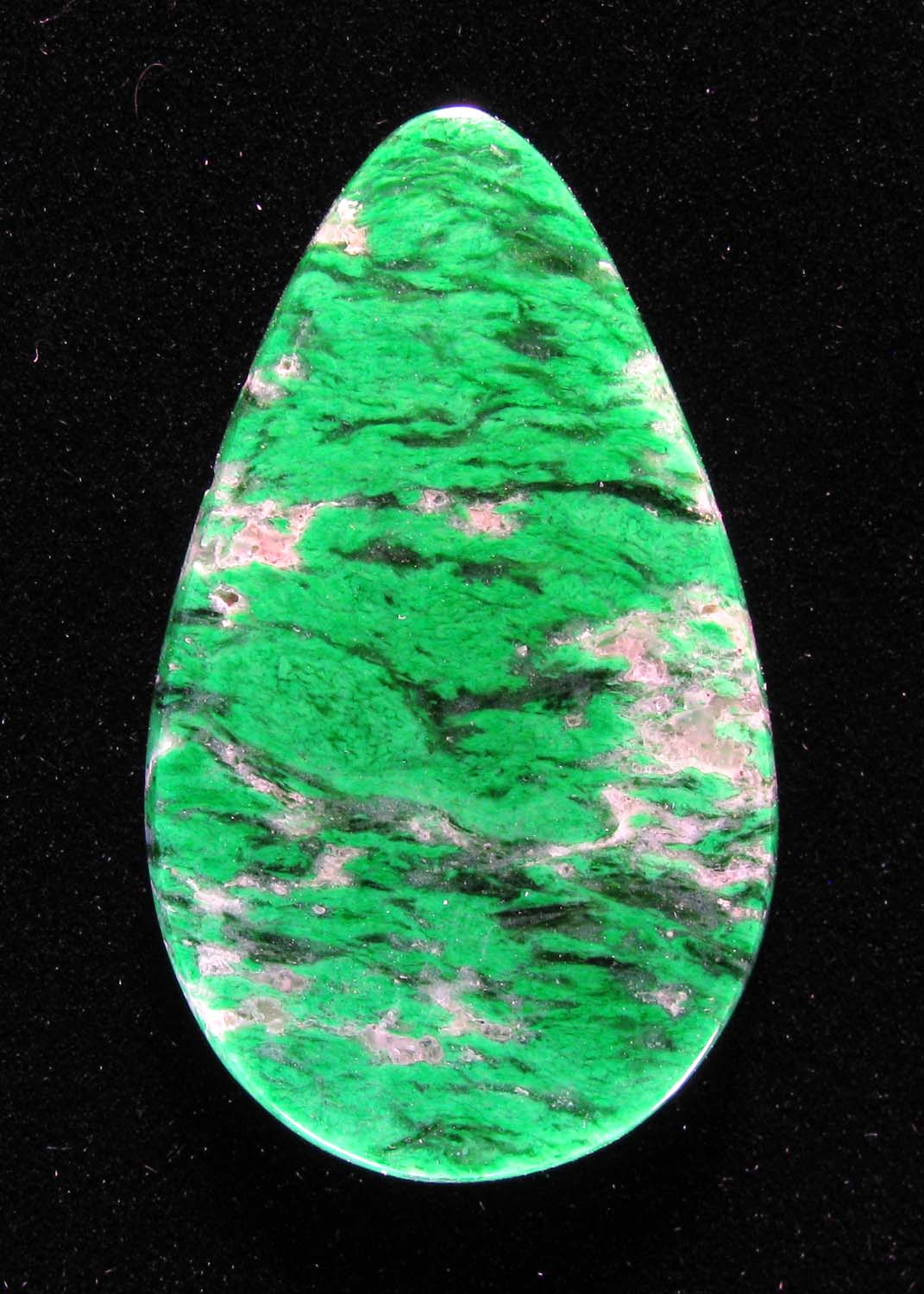|
click to enlarge:

Maw Sit Sit / "Burmese Jade" tear cabochon 10/22/2017 01 - 34 x
20 x 4.3 mm - 22 carats - This rare bright green stone comes
from Burma now called Myanmar (more info below). This gem is
cut to a nicely sized tear drop with a beautifully rounded
low dome, girdled sides and a flat beveled back all with
high gloss luster with a few minor surface flaws, mostly on
the back and bevel. Here's a short video clip to see the
stone in motion - the video does not capture the bright
green as it appears in real life. The photos show the color
much better but the video does show the cut and luster of
the stone very well: https://youtu.be/wKYuiEfrpFA $79.00
shipped to USA - paypal -
ON SALE $69.00
SOLD
"Maw Sit Sit is a green gemstone that was named "maw-sit-sit" after the village where it was found in Northern Burma. Maw-sit-sit was discovered in 1963 by a Swiss gemmologist called Dr Edward Gubelin.
Since it is made of kosmochlor, chromian jadeite, chromian eckermannite, chromian albite, and other materials, maw-sit-sit is considered to be a rock, rather than a mineral.
It is sometimes referred to as a variety of jadeite, but strictly speaking, maw-sit-sit is not jadeite, though it contains jadeite and is mined in the same area as imperial jadeite. Jadeite is a mineral, whereas maw-sit-sit is a rock.
The dominant mineral of maw-sit-sit is kosmochlor and this sets it apart from jadeite, which is sodium aluminium silicate. Therefore, maw-sit-sit is best considered to be related to jadeite. The kosmochlor component of maw-sit-sit is what gives it a beautiful emerald-green colour with blackish-green patches.
Maw-sit-sit is also sometimes referred to as "chloromelanite" or "jade albite", which are names given to rock composed of varying amounts of jadeite, albite feldspar and other minerals
Maw-sit-sit can be identified by its bright, emerald-green colour and distinctive white or dark-green to blackish patches or veins.
So far, maw-sit-sit has only been found in the jade mining region of Northern Burma (Myanmar) known as Tawmaw. Therefore, it is a rare rock and high quality materials command high prices."
|